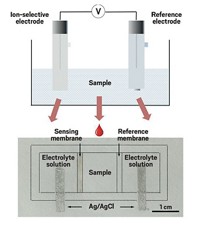Advertisement
Grab your lab coat. Let's get started
Welcome!
Welcome!
Create an account below to get 6 C&EN articles per month, receive newsletters and more - all free.
It seems this is your first time logging in online. Please enter the following information to continue.
As an ACS member you automatically get access to this site. All we need is few more details to create your reading experience.
Not you? Sign in with a different account.
Not you? Sign in with a different account.
ERROR 1
ERROR 1
ERROR 2
ERROR 2
ERROR 2
ERROR 2
ERROR 2
Password and Confirm password must match.
If you have an ACS member number, please enter it here so we can link this account to your membership. (optional)
ERROR 2
ACS values your privacy. By submitting your information, you are gaining access to C&EN and subscribing to our weekly newsletter. We use the information you provide to make your reading experience better, and we will never sell your data to third party members.
Analytical Chemistry
Origami-Based Microfluidics
Texas chemists unveil method for fabricating 3-D microfluidic devices by folding lithographically patterned paper
by Stephen K. Ritter
November 7, 2011
| A version of this story appeared in
Volume 89, Issue 45
With a few quick folds of a sheet of photolithographically patterned paper, Hong Liu and Richard M. Crooks of the University of Texas, Austin, have devised a more functional assembly of paper microfluidic devices (J. Am. Chem. Soc., DOI: 10.1021/ja2071779). In years past, George M. Whitesides and coworkers at Harvard University have reported making three-dimensional paper microfluidic devices, which have potential as low-cost medical diagnostic tools. In these devices, microfluidic channels and reservoirs are patterned on chromatography paper using hydrophobic photoresist material or wax. Aqueous samples are driven along the hydrophilic paper channels by capillary action, and multiple target analytes such as glucose and proteins in a drop of urine can be detected by colorimetric chemistry. The Harvard versions were prepared by patterning individual layers sequentially, stacking them using double-sided tape, and then laser-punching holes to provide connections between layers. Liu and Crooks achieved the same effect, with quantitative fluorescence measurements now possible, by creating patterns in one step on a single sheet of paper and then folding it to obtain the desired stacking order. The Texas team next plans to integrate more sophisticated chemical and biological functions into their origami paper analytical devices, which they are calling oPADs.





Join the conversation
Contact the reporter
Submit a Letter to the Editor for publication
Engage with us on Twitter